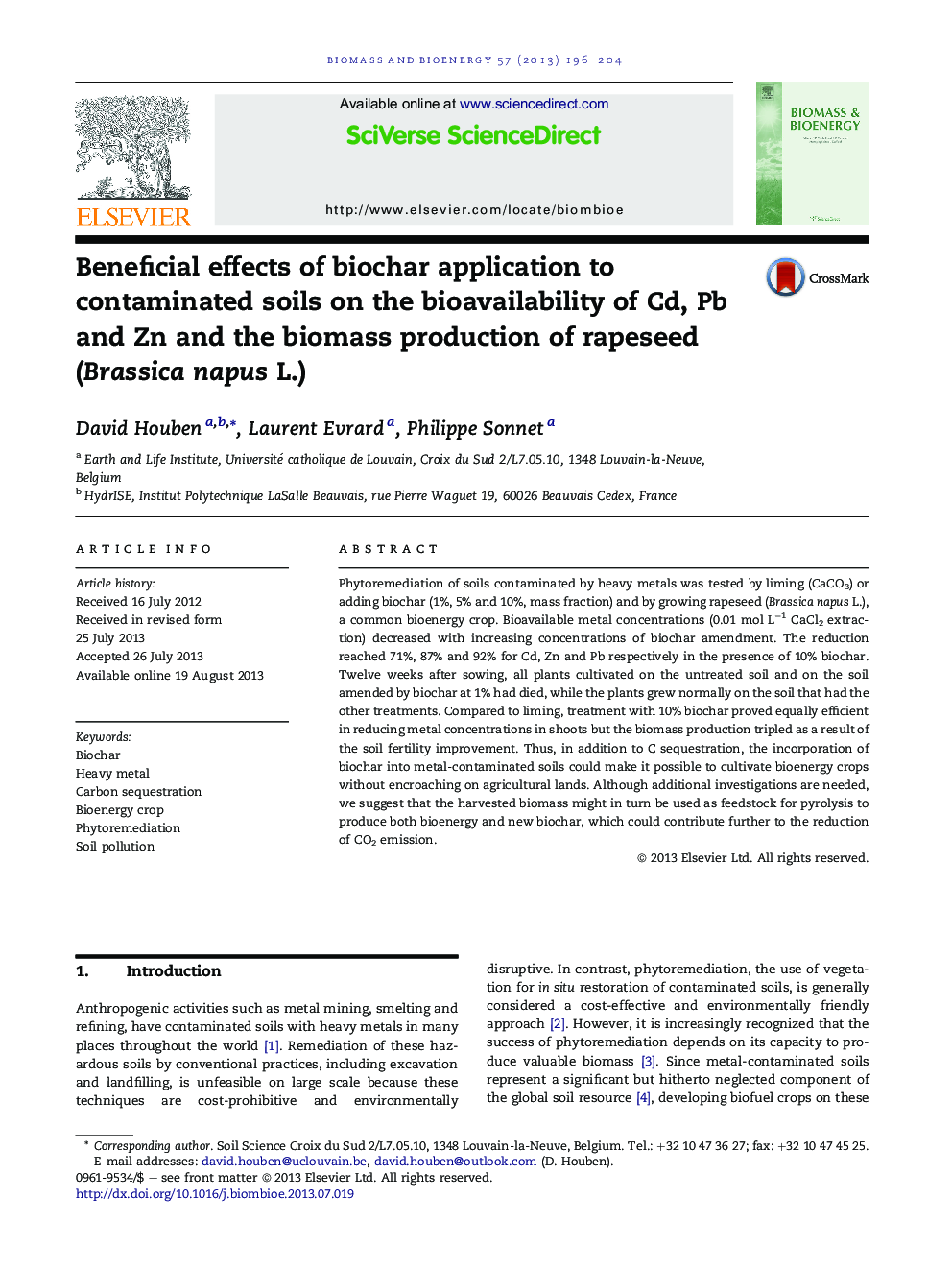| کد مقاله | کد نشریه | سال انتشار | مقاله انگلیسی | نسخه تمام متن |
|---|---|---|---|---|
| 676992 | 1459836 | 2013 | 9 صفحه PDF | دانلود رایگان |

• Biochar incorporation improves pH, CEC and available nutrient content.
• Phytoavailability of Cd, Zn and Pb decreases with increasing biochar applications.
• Biochar application can be as efficient as liming in reducing metal concentration in shoots.
• Biochar application can triple the biomass production of rapeseed compared to liming.
• Combining phytoremediation with C sequestration and bioenergy production is promising.
Phytoremediation of soils contaminated by heavy metals was tested by liming (CaCO3) or adding biochar (1%, 5% and 10%, mass fraction) and by growing rapeseed (Brassica napus L.), a common bioenergy crop. Bioavailable metal concentrations (0.01 mol L−1 CaCl2 extraction) decreased with increasing concentrations of biochar amendment. The reduction reached 71%, 87% and 92% for Cd, Zn and Pb respectively in the presence of 10% biochar. Twelve weeks after sowing, all plants cultivated on the untreated soil and on the soil amended by biochar at 1% had died, while the plants grew normally on the soil that had the other treatments. Compared to liming, treatment with 10% biochar proved equally efficient in reducing metal concentrations in shoots but the biomass production tripled as a result of the soil fertility improvement. Thus, in addition to C sequestration, the incorporation of biochar into metal-contaminated soils could make it possible to cultivate bioenergy crops without encroaching on agricultural lands. Although additional investigations are needed, we suggest that the harvested biomass might in turn be used as feedstock for pyrolysis to produce both bioenergy and new biochar, which could contribute further to the reduction of CO2 emission.
Journal: Biomass and Bioenergy - Volume 57, October 2013, Pages 196–204